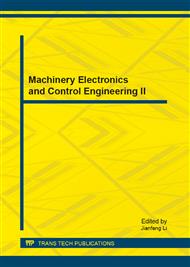p.813
p.817
p.821
p.828
p.833
p.837
p.843
p.847
p.853
Research and Application of Wind-Solar Hybrid Power Supply System in Environmental Monitoring System
Abstract:
A wind-solar hybrid DC power supply system for small wireless sensor devices is introduced in this paper. The environmental monitoring system is selected as the application platform, and ARM microprocessor is selected as the control core. With the use of the multi-stage constant current technology, the battery life and charge efficiency are optimized. With the design of LCD module and RS232 interface in the system, the difficulty of the system debugging and maintenance are reduced while the flexibility of the system is increased. The experimental result shows that the most use of wind and solar energy is realized in this system.
Info:
Periodical:
Pages:
833-836
Citation:
Online since:
March 2013
Authors:
Price:
Сopyright:
© 2013 Trans Tech Publications Ltd. All Rights Reserved
Share:
Citation:



